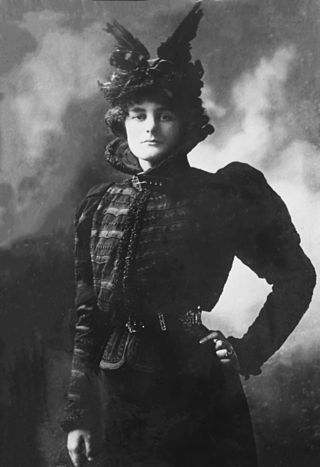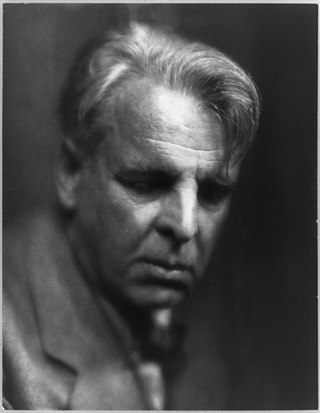Hexameter is a metrical line of verses consisting of six feet. It was the standard epic metre in classical Greek and Latin literature, such as in the Iliad, Odyssey and Aeneid. Its use in other genres of composition include Horace's satires, Ovid's Metamorphoses, and the Hymns of Orpheus. According to Greek mythology, hexameter was invented by Phemonoe, daughter of Apollo and the first Pythia of Delphi.

Poetry is a form of literary art that uses aesthetic and often rhythmic qualities of language to evoke meanings in addition to, or in place of, literal or surface-level meanings. Any particular instance of poetry is called a poem and is written by a poet. Poets use a variety of techniques called poetic devices, such as assonance, alliteration, euphony and cacophony, onomatopoeia, rhythm, and sound symbolism, to produce musical or incantatory effects. Most poems are formatted in verse: a series or stack of lines on a page, which follow a rhythmic or other deliberate pattern. For this reason, verse has also become a synonym for poetry.
A sestina is a fixed verse form consisting of six stanzas of six lines each, normally followed by a three-line envoi. The words that end each line of the first stanza are used as line endings in each of the following stanzas, rotated in a set pattern.

William Butler Yeats was an Irish poet, dramatist and writer, and one of the foremost figures of 20th-century literature. He was a driving force behind the Irish Literary Revival, and along with Lady Gregory founded the Abbey Theatre, serving as its chief during its early years. He was awarded the 1923 Nobel Prize in Literature, and later served two terms as a Senator of the Irish Free State.
Rhyme royal is a rhyming stanza form that was introduced to English poetry by Geoffrey Chaucer. The form enjoyed significant success in the fifteenth century and into the sixteenth century. It has had a more subdued but continuing influence on English verse in more recent centuries.

Maud Gonne MacBride was an Irish republican revolutionary, suffragette and actress. She was of Anglo-Irish descent and was won over to Irish nationalism by the plight of people evicted in the Land Wars. She actively agitated for home rule and then for the republic declared in 1916. During the 1930s, as a founding member of the Social Credit Party, she promoted the distributive programme of C. H. Douglas. Gonne was well known for being the muse and long-time love interest of Irish poet W. B. Yeats.
Old Norse poetry encompasses a range of verse forms written in the Old Norse language, during the period from the 8th century to as late as the far end of the 13th century. Old Norse poetry is associated with the area now referred to as Scandinavia. Much Old Norse poetry was originally preserved in oral culture, but the Old Norse language ceased to be spoken and later writing tended to be confined to history rather than for new poetic creation, which is normal for an extinct language. Modern knowledge of Old Norse poetry is preserved by what was written down. Most of the Old Norse poetry that survives was composed or committed to writing in Iceland, after refined techniques for writing were introduced—seemingly contemporaneously with the introduction of Christianity: thus, the general topic area of Old Norse poetry may be referred to as Old Icelandic poetry in literature.
Common metre or common measure—abbreviated as C. M. or CM—is a poetic metre consisting of four lines that alternate between iambic tetrameter and iambic trimeter, with each foot consisting of an unstressed syllable followed by a stressed syllable. The metre is denoted by the syllable count of each line, i.e. 8.6.8.6, 86.86, or 86 86, depending on style, or by its shorthand abbreviation "CM".

This glossary of literary terms is a list of definitions of terms and concepts used in the discussion, classification, analysis, and criticism of all types of literature, such as poetry, novels, and picture books, as well as of grammar, syntax, and language techniques. For a more complete glossary of terms relating to poetry in particular, see Glossary of poetry terms.
This is a glossary of poetry terms.

Easter, 1916 is a poem by W. B. Yeats describing the poet's torn emotions regarding the events of the Easter Rising staged in Ireland against British rule on Easter Monday, April 24, 1916. The rebellion was unsuccessful, and most of the Irish republican leaders involved were executed. The poem was written between May and September 1916, printed privately, 25 copies, and appeared in magazines in 1920 but first published in 1920 in the collection Michael Robartes and the Dancer.

"A Prayer for My Daughter" is a poem by William Butler Yeats written in 1919 and published in 1921 as part of Yeats' collection Michael Robartes and the Dancer. It is written to Anne, his daughter with Georgie Hyde-Lees, whom Yeats married after his last marriage proposal to Maud Gonne was rejected in 1916. Yeats composed the poem while staying in a tower at Thoor Ballylee during the Anglo-Irish War, two days after Anne's birth on 26 February 1919. The poem reflects Yeats's complicated views on Irish Nationalism, sexuality, and is considered an important work of Modernist poetry.
The following outline is provided as an overview of and introduction to poetry:
"The Wild Swans at Coole" is a lyric poem by the Irish poet William Butler Yeats (1865–1939). Written between 1916 and early 1917, the poem was first published in the June 1917 issue of the Little Review, and became the title poem in the Yeats's 1917 and 1919 collections The Wild Swans at Coole.

Iseult Lucille Germaine Gonne was the daughter of the Irish republican revolutionary Maud Gonne and the French politician and journalist Lucien Millevoye. She married the novelist Francis Stuart in 1920.
Decasyllabic quatrain is a poetic form in which each stanza consists of four lines of ten syllables each, usually with a rhyme scheme of AABB or ABAB. Examples of the decasyllabic quatrain in heroic couplets appear in some of the earliest texts in the English language, as Geoffrey Chaucer created the heroic couplet and used it in The Canterbury Tales. The alternating form came to prominence in late 16th-century English poetry and became fashionable in the 17th century when it appeared in heroic poems by William Davenant and John Dryden. In the 18th century famous poets such as Thomas Gray continued to use the form in works such as "Elegy Written in a Country Churchyard". Shakespearean Sonnets, comprising 3 quatrains of iambic pentameter followed by a final couplet, as well as later poems in blank verse have displayed the various uses of the decasyllabic quatrain throughout the history of English Poetry.
"In Memory of Eva Gore-Booth and Con Markiewicz" is a poem in two stanzas by William Butler Yeats, written in 1927 and published in his 1933 collection The Winding Stair and Other Poems.

Blood and the Moon is a poem by Irish poet William Butler Yeats written in 1927. It was first published in the Spring 1928 issue of The Exile and then in the collection The Winding Stair in 1929, before being reprinted in The Winding Stair and Other Poems in 1933. Yeats composed the poem in response to the 1927 assassination of Kevin O'Higgins, the Vice-President of the Free State, whom Yeats had known personally. The poem contains many themes common in Yeats's poems from the 1920s including the "tower", a reference to Thoor Ballylee, which had been the title of a collection of works printed the year before "Blood and the Moon" was published, as well as the "gyre" which had been a major focus of his 1920 poem "The Second Coming".
"To the Rose upon the Rood of Time" is poem by W. B. Yeats that was published in The Rose in 1893. The poem is one of many early Yeatsian lyrical poems which utilize the symbol of the rose. The poem consists of twelve rhyming couplets in iambic pentameter.
The Gift of Harun Al-Raschid, written in 1923, is a poem by the Irish poet William Butler Yeats, first published in 1924 in the American journal The Dial in a collection of The Cat and the Moon and Certain Poems. The poem was then published in his prose book A Vision in 1925 and was included in Yeats's collection of The Tower, which was published in 1928.






